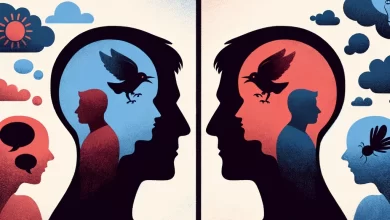Anxious Attachment Style: Understanding & Healing

Did you know that approximately 20% of adults have an anxious attachment style?
Anxious attachment style is a common but often misunderstood aspect of adult relationships. Derived from attachment theory in psychology, this attachment style can have a significant impact on how individuals form and maintain relationships with others.
In this article, we will delve into the world of anxious attachment and explore the symptoms, origins, and consequences of this attachment style. We will also provide strategies and techniques for healing and developing a secure attachment.
Key Takeaways:
- Approximately 20% of adults have an anxious attachment style, which can affect their ability to form and maintain relationships.
- Anxious attachment is characterized by a strong desire for emotional intimacy combined with an intense fear of rejection or abandonment.
- Recognizing the symptoms and understanding the origins of anxious attachment can help individuals work towards healing and developing healthier attachment patterns.
- Practicing mindfulness, emotional regulation, and setting healthy boundaries are essential strategies for overcoming anxious attachment.
- Therapy, such as attachment-focused therapy and cognitive-behavioral therapy, can provide valuable support and guidance in healing anxious attachment.
Understanding Anxious Attachment Style
Anxious attachment style is a pattern of behavior that is characterized by a constant desire for reassurance, difficulty trusting others, and excessive worry and anxiety about relationships. Individuals with anxious attachment often exhibit behaviors such as clinginess, jealousy, and neediness. They may experience a persistent fear of abandonment or rejection and have a strong desire for emotional closeness and intimacy.
This attachment style can greatly impact one’s ability to form and maintain healthy relationships. Understanding the symptoms of anxious attachment is the first step towards recognizing and addressing this attachment style.
Symptoms of Anxious Attachment
- Constant need for reassurance: Individuals with anxious attachment often seek reassurance from their partners to alleviate their fears of abandonment or rejection.
- Difficulty trusting others: Due to past experiences or insecurities, individuals with anxious attachment find it challenging to trust others fully.
- Excessive worry and anxiety: Anxious attachment individuals tend to experience heightened levels of worry and anxiety about their relationships and the possibility of their partners leaving them.
- Clinginess and neediness: People with anxious attachment often exhibit clingy and needy behavior, desiring constant attention and reassurance from their partners.
- Jealousy: Anxious attachment individuals may struggle with jealousy, feeling threatened by perceived threats to their relationship.
Recognizing these symptoms can help individuals gain a better understanding of their attachment style and take steps towards addressing and healing anxious attachment. It is important to note that with self-awareness and intentional effort, individuals can work towards developing a more secure attachment style and fostering healthier relationships.
Being aware of the signs and symptoms of anxious attachment is the first step towards understanding and addressing this attachment style. By recognizing these patterns, individuals can embark on a journey of healing, personal growth, and the development of healthier attachment patterns.
Origins and Development of Anxious Attachment
Anxious attachment style often develops as a result of early childhood experiences, particularly those involving inconsistent or unpredictable caregiving. Children who grow up in an environment where their emotional needs are not consistently met may develop a constant sense of insecurity and a need for reassurance. This attachment pattern becomes ingrained over time and can significantly impact adult relationships.
During childhood, the foundation for attachment development is formed through interactions with primary caregivers. Childhood experiences play a crucial role in shaping the attachment style that individuals carry into their adult relationships. In the case of anxious attachment, inconsistent or unpredictable caregiving can create a sense of uncertainty and fear in the child.
Inconsistent caregiving refers to a caregiving style that is erratic, unpredictable, or emotionally unavailable. Parents or primary caregivers may exhibit inconsistent responses to the child’s needs, sometimes being nurturing and responsive, while other times being distant or unresponsive. This inconsistency can create anxiety in the child as they are unsure of what to expect from their caregivers.
Because attachment development occurs during the early years of life, children are highly dependent on their caregivers for emotional and physical support. When caregivers are inconsistently available or responsive, the child may develop a deep-seated need for reassurance and validation. This need for reassurance becomes a central theme in their adult relationships, often causing them to seek constant validation and reassurance from their partners.
Understanding the origins and development of anxious attachment is essential for individuals who wish to make sense of their attachment style and work towards healing. Acknowledging the impact of childhood experiences and inconsistent caregiving can provide insight into why certain attachment patterns persist into adulthood.
Below is a table summarizing the origins and development of anxious attachment:
| Origins and Development of Anxious Attachment | |
|---|---|
| Early childhood experiences | Inconsistent or unpredictable caregiving |
| Attachment development | Formation of anxious attachment style |
| Impact on adult relationships | Need for constant reassurance and fear of abandonment |
This table highlights the key factors contributing to the origins and development of anxious attachment. It emphasizes the role of early childhood experiences and inconsistent caregiving in shaping attachment styles and the lasting impact it can have on adult relationships.
The Impact of Anxious Attachment on Relationships
Anxious attachment style can have a significant impact on relationships, creating difficulties in maintaining healthy and fulfilling connections. Individuals with anxious attachment may exhibit behaviors such as clinginess, jealousy, and neediness, which can strain relationships and create tension. These insecure attachment patterns can lead to relationship conflicts and dissatisfaction.
The impact of anxious attachment on relationships stems from the underlying fear of abandonment and rejection that individuals with this attachment style often experience. This fear can manifest in various ways, including a constant need for reassurance and a lack of trust in others. It can be challenging for individuals with anxious attachment to set healthy boundaries and navigate the complexities of interpersonal dynamics.
Quote: “Anxious attachment can create a cycle of seeking closeness, fearing rejection, and feeling overwhelmed by emotions, making it difficult to sustain a healthy and secure relationship.” – Relationship Therapist
Recognizing the impact of anxious attachment on relationships is crucial for individuals seeking to make positive changes and develop healthier attachment styles. By understanding the root causes of anxious attachment and its effects, individuals can take proactive steps towards healing and growth.
Difficulties in Maintaining Healthy Relationships
Individuals with anxious attachment may struggle in maintaining healthy relationships due to their attachment patterns. The constant need for reassurance and fear of rejection can lead to insecurity and dependence on their partners. This can create a dynamic of imbalance, where one person becomes overly reliant on the other for emotional stability and validation.
The constant need for reassurance can also put strain on the relationship, as the anxious partner may seek constant validation and affirmation, which can be emotionally exhausting for their partner. This dynamic can lead to feelings of suffocation or entrapment, ultimately resulting in relationship dissatisfaction.
Quote: “An anxious attachment style can create a dynamic where one partner feels overwhelmed by the constant need for reassurance and the other feels suffocated by the dependency.” – Relationship Counselor
Insecure Attachment Patterns and Relationship Conflicts
Anxious attachment patterns rooted in fear and insecurity can contribute to relationship conflicts. Individuals with anxious attachment may become overly sensitive to perceived threats of abandonment or rejection, leading to heightened emotions and conflict escalation. This can create a cycle of emotional turmoil and misunderstandings within the relationship.
Additionally, the difficulty in trusting others that often accompanies anxious attachment can lead to constant suspicion and jealousy. This can strain the bond between partners and hinder the development of a secure and trusting relationship.
Quote: “Insecure attachment patterns can create a constant state of emotional turmoil, leading to relationship conflicts and dissatisfaction.” – Relationship Specialist
The Importance of Healing and Developing Healthier Attachment Styles
Recognizing the impact of anxious attachment on relationships is the first step towards healing and developing healthier attachment styles. Through therapy, self-reflection, and self-awareness, individuals can overcome the negative effects associated with anxious attachment and cultivate secure and satisfying relationships.
By addressing the underlying insecurities and fears that drive anxious attachment, individuals can learn to trust themselves and others, set healthy boundaries, and foster a more balanced and fulfilling connection with their partners. Healing from anxious attachment is a journey that requires patience, self-compassion, and a willingness to grow.
Quote: “Healing from anxious attachment involves building self-confidence, developing trust, and creating secure connections with others.” – Attachment Therapist
To gain a deeper understanding of the impact of anxious attachment, it is essential to explore the origins and development of this attachment style. Section 5 will delve into strategies for overcoming anxious attachment and fostering a more secure and fulfilling attachment style.

Overcoming Anxious Attachment: Healing Strategies
Overcoming anxious attachment requires intentional effort and healing strategies. One effective approach is developing a secure attachment through earned secure attachment. This can be achieved through therapy, self-reflection, and engaging in healthy relationships.
Therapy plays a crucial role in the healing process. It provides a safe and supportive environment for individuals to explore and address the root causes of their anxious attachment. Through therapy, individuals can gain insight into their attachment patterns, understand their emotions, and learn healthier ways of relating to others.
Self-reflection is an important aspect of overcoming anxious attachment. It involves taking the time to examine one’s own thoughts, feelings, and behaviors. By gaining self-awareness, individuals can identify patterns, understand their triggers, and make conscious choices that lead to more secure attachment styles.
“The journey of healing anxious attachment starts with self-reflection and self-compassion. It’s about understanding and being aware of your emotions and how they impact your relationships.”
In addition to therapy and self-reflection, it is beneficial to engage in healthy relationships that foster secure attachment. Building connections with individuals who have a secure attachment style provides positive experiences and role-modeling of healthy relationship dynamics.
Benefits of Healing Strategies
Implementing healing strategies for overcoming anxious attachment can lead to significant positive changes in one’s life. These strategies promote the development of a secure attachment style, characterized by trust, emotional security, and the ability to form and maintain healthy relationships.
By overcoming anxious attachment, individuals can experience:
- Increased self-confidence and self-worth
- Improved emotional well-being
- Greater trust in oneself and others
- Ability to establish and maintain healthy boundaries
- Enhanced ability to regulate and express emotions
- More satisfying and fulfilling relationships
Healing from anxious attachment is an ongoing process, but with dedication and the right strategies, individuals can overcome their attachment insecurities and create a more secure and fulfilling life.
Cultivating Emotional Awareness
Cultivating emotional awareness is an essential component in the process of healing anxious attachment. Individuals with an anxious attachment style often struggle with identifying and regulating their own emotions, which can lead to difficulties in maintaining healthy relationships. By developing emotional self-regulation skills and practicing mindfulness, individuals can increase their personal awareness and better manage anxiety, reducing the impact of anxious attachment behaviors that may sabotage their relationships.
Mindfulness techniques, such as meditation and deep breathing exercises, offer powerful tools for enhancing emotional self-regulation and cultivating emotional awareness. Mindfulness involves being fully present in the moment and observing one’s thoughts and emotions without judgment. This practice allows individuals to better understand their emotional responses and develop more effective ways of managing them.
Through mindfulness, individuals can learn to recognize their emotional triggers and respond to them in healthier and more constructive ways. By practicing non-judgmental awareness, individuals can observe their emotions without being overwhelmed by them, creating space for intentional choices rather than reactive behavior. This can ultimately lead to a reduction in anxious attachment behaviors and the development of more secure and fulfilling relationships.
It is important to note that cultivating emotional awareness is a gradual process that requires consistent practice and self-reflection. It may be helpful to seek guidance from a therapist or engage in programs that focus on emotional regulation and mindfulness. With time and effort, individuals can develop a greater understanding of their emotions, better manage anxiety, and foster healthier attachment patterns.
| Strategy | Description |
|---|---|
| 1. Mindful breathing | Engage in deep breathing exercises to promote relaxation and focus. |
| 2. Meditation | Practice mindfulness meditation to develop non-judgmental awareness of thoughts and emotions. |
| 3. Journaling | Write down thoughts and feelings to increase self-awareness and gain insight into emotional patterns. |
| 4. Body scan | Conduct a physical scan of the body to identify areas of tension and release it through relaxation techniques. |
| 5. Self-reflection | Take time to reflect on emotions, triggers, and patterns to gain deeper understanding and make intentional choices. |
By incorporating these strategies into a daily practice, individuals can cultivate emotional awareness, enhance emotional self-regulation, and promote healing from anxious attachment.
Setting Healthy Boundaries
Setting healthy boundaries is crucial in developing and maintaining healthy relationships. For individuals with anxious attachment, setting boundaries becomes even more important to promote self-sufficiency and establish a sense of autonomy. By recognizing personal limits and communicating them assertively to partners, setting boundaries allows individuals to prioritize their needs and foster healthy relationships based on respect and clear communication.
Anxious attachment often stems from a deep-seated fear of abandonment or rejection, leading individuals to depend heavily on others for validation and happiness. However, by setting boundaries, individuals can regain control over their own well-being and reduce their reliance on external sources of validation. Boundaries provide a framework for self-sufficiency, empowering individuals to maintain a strong sense of self-worth and fulfill their own emotional needs.
“Setting boundaries is about recognizing and communicating your needs without fear or guilt. It’s an essential aspect of self-care and building healthy relationships.” – Dr. Jessica Simmons, Psychologist
When setting boundaries, it is important to be clear and assertive in expressing your needs and expectations. This could involve voicing your desire for personal space or defining what behaviors are acceptable or unacceptable in a relationship. Healthy boundaries also require active listening and respecting the boundaries set by others, fostering mutual understanding and respect.
Setting boundaries creates a balanced dynamic in relationships, enabling individuals to express their thoughts and emotions without fear of judgment or rejection. It promotes open and honest communication, allowing both partners to feel heard and understood. By setting and respecting boundaries, individuals with anxious attachment can create healthier and more fulfilling relationships.
Table: Examples of Healthy Boundaries
| Boundary Type | Examples |
|---|---|
| Physical boundaries | Respecting personal space, consent, and privacy |
| Emotional boundaries | Communicating needs, setting limits on emotional labor |
| Time boundaries | Establishing designated alone time and prioritizing self-care |
| Communication boundaries | Establishing guidelines for respectful and effective communication |
| Relationship boundaries | Defining expectations and boundaries within the relationship |
Building Self-Esteem
Building self-esteem is a fundamental aspect of overcoming feelings of unworthiness and developing a secure attachment style. When grappling with anxious attachment, individuals may struggle with negative thoughts and beliefs about themselves. Recognizing and challenging these patterns is essential for promoting personal growth and cultivating a healthier approach to relationships.
Practicing self-compassion is a powerful tool in the journey of building self-esteem. Being kind, understanding, and forgiving toward oneself helps combat self-critical thoughts and fosters a sense of acceptance and worthiness.
Focusing on personal strengths and achievements is another effective strategy to enhance self-esteem. By acknowledging accomplishments, setting realistic goals, and celebrating progress, individuals can develop a positive self-image and bolster their confidence.
It’s important to remember that building self-esteem is a gradual process that requires patience and self-reflection. Engaging in mindfulness practices can be beneficial in quieting self-doubt and promoting self-awareness. Through techniques such as meditation and deep breathing exercises, individuals can cultivate a deeper understanding of their emotions and develop the ability to respond to challenging situations with clarity and calmness.
“Cultivating self-esteem starts with recognizing and challenging negative self-talk. By replacing self-criticism with self-compassion, individuals can cultivate a strong foundation of self-worth.” – Dr. Jane Johnson, Psychologist
Acknowledging and addressing unhelpful thought patterns is crucial in building self-esteem. Cognitive-behavioral therapy techniques can assist individuals in challenging negative beliefs about themselves, exploring evidence that contradicts these beliefs, and developing more positive and realistic self-perceptions.
Building self-esteem also involves cultivating self-love. Engaging in activities that bring joy and fulfillment, surrounding oneself with positive and supportive individuals, and practicing self-care are all important components of nurturing self-worth.
It’s worth noting that building self-esteem is a journey unique to each individual. It may be beneficial to seek support from therapy or support groups to guide and facilitate the process of building self-esteem. Therapy can provide a safe space to explore underlying issues, develop coping skills, and work towards a more secure attachment style.
By actively engaging in strategies to build self-esteem, individuals can gradually overcome unworthiness and develop a strong foundation of self-worth. Doing so not only cultivates healthier relationships, but also fosters a greater sense of resilience, contentment, and fulfillment in all aspects of life.
For more information on building self-esteem and overcoming anxious attachment, check out this resource.
Practicing Mindfulness and Emotional Regulation
Practicing mindfulness and emotional regulation is essential for individuals with anxious attachment to manage their emotions and reduce anxious attachment behaviors. Mindfulness allows individuals to be present in the moment and observe their thoughts and emotions without judgment mindfulness. This can help reduce reactivity and promote emotional regulation emotional regulation. Developing distress tolerance skills is also important for managing the intense emotions that may arise in anxious attachment situations distress tolerance.
Mindfulness involves focusing on the present moment, bringing attention to internal experiences without getting caught up in judgment or overthinking. By practicing mindfulness, individuals can cultivate a greater awareness of their emotions, thoughts, and physical sensations mindfulness. This heightened self-awareness allows individuals to recognize when they may be experiencing anxiety or other distressing emotions related to their attachment style mindfulness. Through regular mindfulness practice, individuals can learn to observe their emotions without immediately reacting to them, creating space for more intentional responses emotional regulation.
“Mindfulness is the key to unlocking emotional freedom. By being fully present in the moment, we can observe our emotions with compassion and make choices that align with our values.” – Dr. Sarah Johnson
Emotional regulation is an essential skill for individuals with anxious attachment, as it allows them to manage and navigate their emotions more effectively emotional regulation. By developing emotional regulation skills, individuals can learn to identify triggers and respond in healthier ways, rather than reacting impulsively or destructively emotional regulation. This entails recognizing the onset of strong emotions, understanding their underlying causes, and implementing techniques to calm oneself emotional regulation. Examples of effective emotional regulation strategies include deep breathing exercises, grounding techniques, and journaling emotional regulation.
Moreover, developing distress tolerance skills is crucial for individuals with anxious attachment to manage intense emotions that may arise in their relationships distress tolerance. Distress tolerance involves the ability to withstand emotional discomfort without resorting to impulsive or harmful behaviors distress tolerance. By enhancing distress tolerance, individuals can learn to tolerate distressing situations, tolerate uncertainty and ambiguity, and find healthier ways to cope with distress distress tolerance.
Practicing mindfulness and emotional regulation can help individuals with anxious attachment navigate their emotions and cultivate healthier attachment patterns. By being present in the moment, observing emotions without judgment, and developing distress tolerance, individuals can develop a greater sense of self-awareness and emotional well-being.
The Role of Therapy in Overcoming Anxious Attachment
Therapy plays a crucial role in helping individuals overcome anxious attachment and cultivate healthier attachment styles. Two powerful therapeutic approaches for addressing anxious attachment are attachment-focused therapy and cognitive-behavioral therapy.
Attachment-Focused Therapy:
Attachment-focused therapy, such as emotionally focused therapy, aims to help individuals understand and address the underlying causes of their anxious attachment. This therapy focuses on building a secure attachment by exploring past experiences, emotions, and patterns of attachment behavior. Through this process, individuals gain insight into their attachment style, develop healthier coping mechanisms, and learn to create secure and trusting relationships.
Cognitive-Behavioral Therapy:
Cognitive-behavioral therapy (CBT) is another effective therapeutic approach in overcoming anxious attachment. CBT helps individuals challenge negative thoughts and behaviors associated with anxious attachment. By identifying and replacing maladaptive thought patterns, individuals can develop more positive and realistic beliefs about themselves, relationships, and attachment. CBT also equips individuals with practical skills to manage anxiety, improve communication, and set healthy boundaries.
Benefits of Therapy:
Working with a therapist provides essential support, guidance, and tools for individuals navigating the journey of overcoming anxious attachment. Therapists offer a safe and nonjudgmental space for clients to explore their attachment concerns, gain insight into their emotions and behaviors, and develop effective strategies for building secure relationships.
Therapy sessions often involve a combination of individual therapy and couples therapy, depending on the individual’s needs and relationship dynamics. In the therapeutic setting, individuals can work collaboratively with their therapist to set goals, address underlying issues, and implement strategies for healing and growth.
It is important to note that therapy is a gradual process that requires commitment and active participation. The length of therapy may vary depending on the individual’s progress and goals. However, with consistent effort and the guidance of a skilled therapist, individuals can make significant strides in overcoming anxious attachment and building healthier attachment patterns.

Recognizing Signs of Healing
As individuals embark on their journey to heal from anxious attachment, they may begin to witness significant signs of progress and personal growth. These signs serve as testaments to their efforts and provide encouragement to continue on the path of healing.
“Healing is a process that unfolds gradually, and recognizing the signs of progress can be empowering.”
One of the signs of healing from anxious attachment is an improved ability to establish and maintain healthy boundaries in relationships. This newfound skill allows individuals to protect their emotional well-being and honor their own needs while fostering healthier and more mutually fulfilling connections.
Moreover, when healing from anxious attachment, individuals often experience a reduced dependence on others for validation. They learn to cultivate self-worth and find satisfaction within themselves, rather than seeking constant reassurance from external sources.
A remarkable outcome of the healing journey is the development of increased self-confidence. Individuals with anxious attachment often grapple with self-doubt and insecurities, but as they heal, they gain a newfound belief in their own abilities and worth. This heightened self-confidence empowers them to navigate relationships with greater assurance and assertiveness.
Finally, a key sign of healing from anxious attachment is the ability to engage in secure and fulfilling relationships. Individuals learn to let go of their fear of abandonment or rejection and develop trust within themselves and with their partners. These healthy relationships bring joy, stability, and emotional security.
Signs of Healing:
- Improved ability to maintain healthy boundaries
- Reduced dependence on others for validation
- Increased self-confidence
- Engagement in fulfilling and secure relationships
Recognizing these signs of healing can provide individuals with motivation and encouragement to continue their transformative journey. As they progressively experience healthier relationships, increased self-confidence, and inner strength, they unlock the potential for profound personal growth and lasting happiness.
Conclusion
Overcoming anxious attachment style is a journey that requires intentional effort and self-reflection. By understanding the origins and impact of anxious attachment, individuals can embark on a path of healing and growth. Therapy, along with the development of secure relationships, can play a significant role in this process.
Through therapy, individuals can address the underlying causes of their anxious attachment and learn new ways to navigate relationships. The support and guidance of a therapist can provide invaluable tools for developing a secure attachment style and establishing healthier patterns of relating to others.
Healing from anxious attachment can lead to a range of positive outcomes. Improved emotional well-being, healthier relationships, increased self-esteem, and greater trust in oneself and others are just some of the benefits that individuals can experience. By implementing healing strategies and cultivating a secure attachment, individuals can create lasting and fulfilling relationships that promote personal growth and happiness.
If you want to dive deeper into understanding anxious attachment style and its impact on relationships, Psychology Today offers valuable insights on this topic. Remember, healing from anxious attachment is possible, and with the right support and dedication, individuals can embrace a future filled with love, security, and personal growth.






